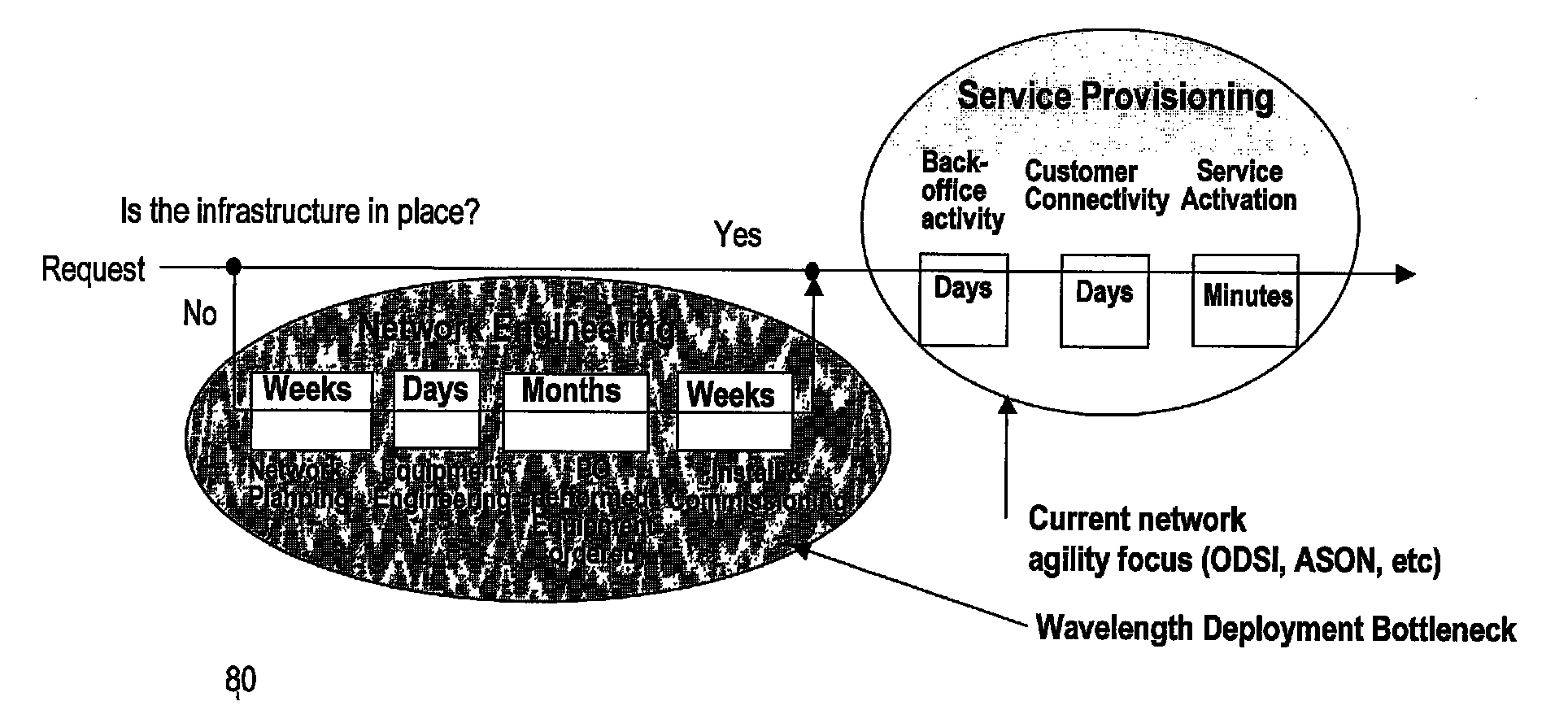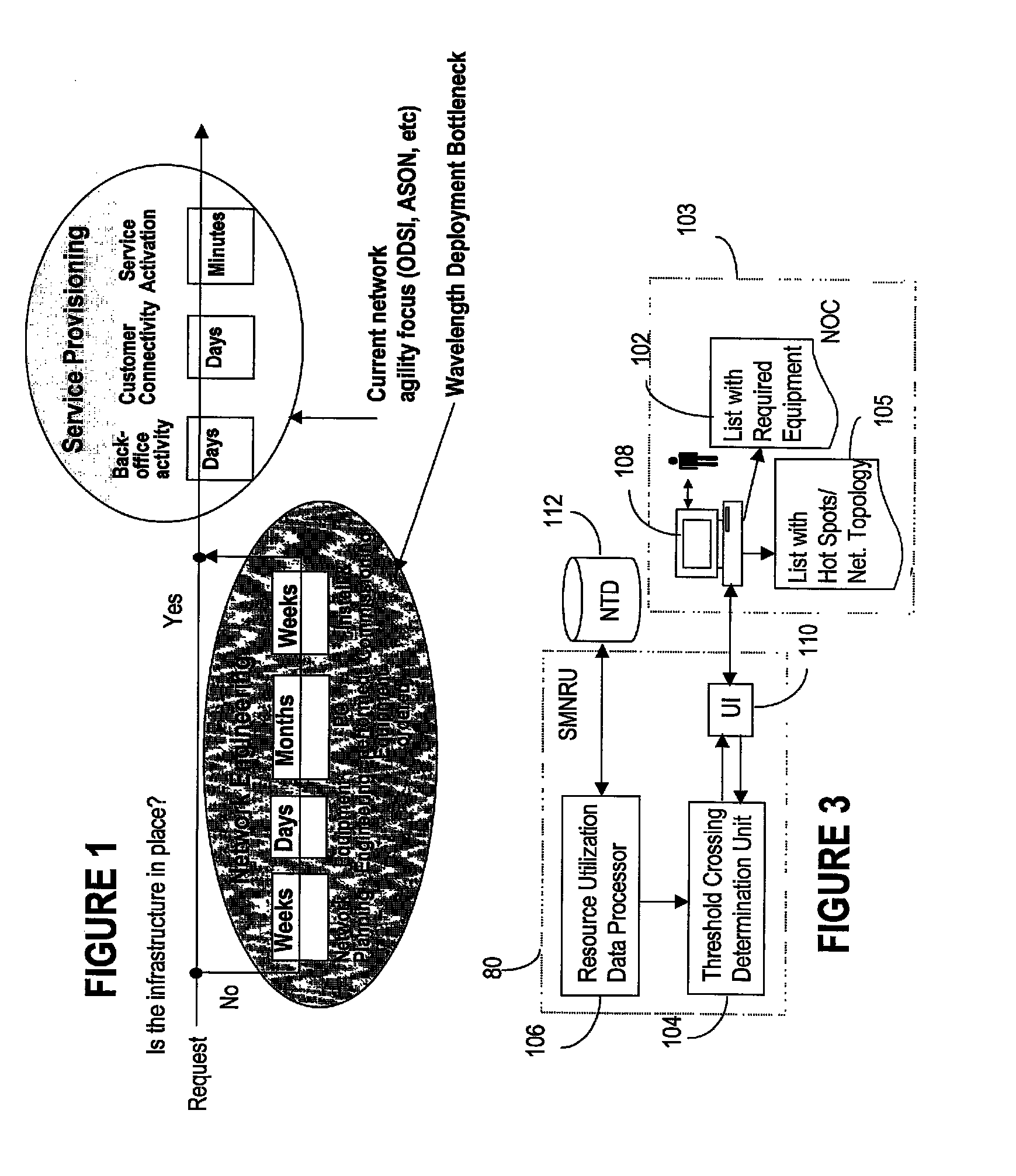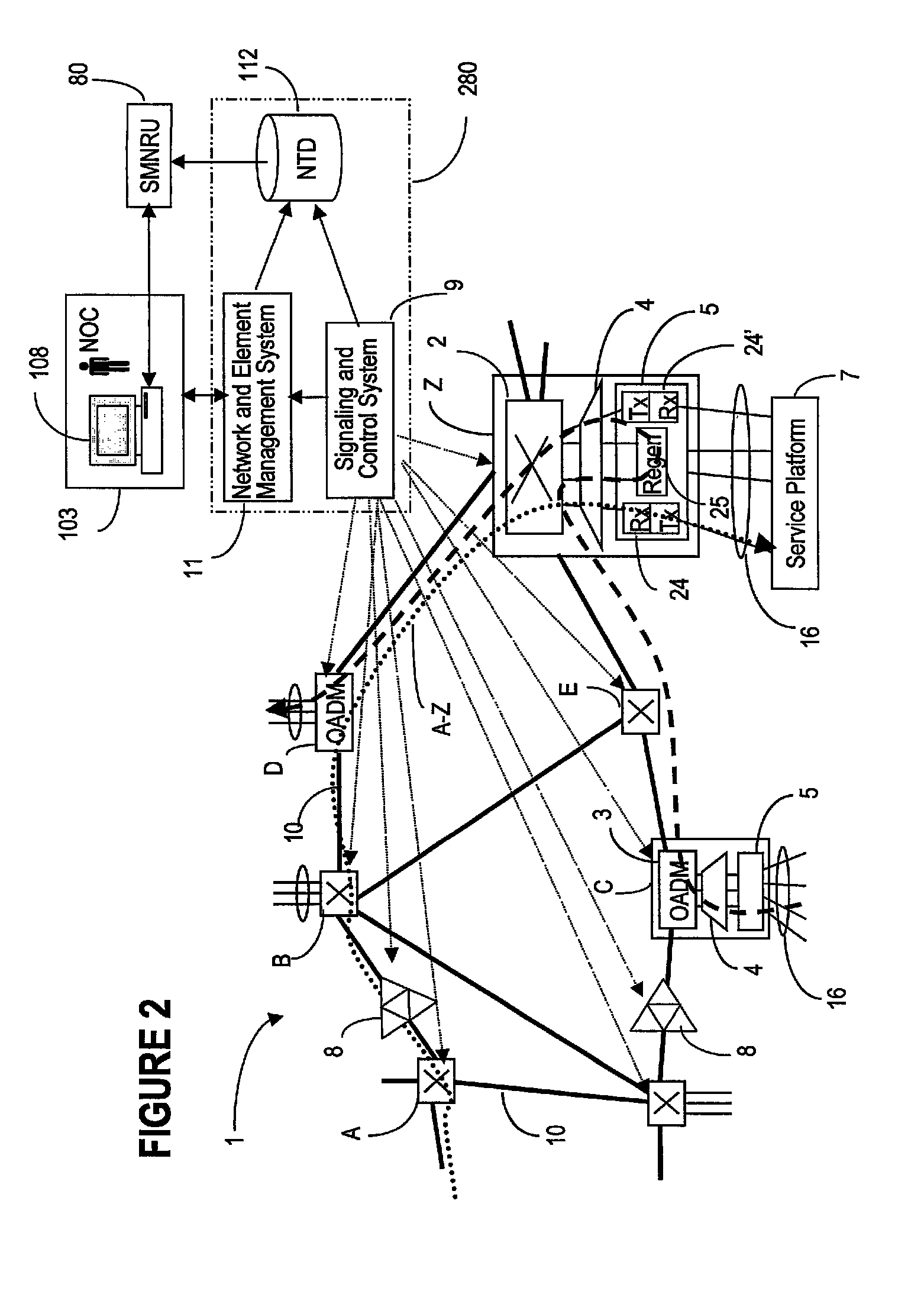Method and system for monitoring network resources utilization
a network resource and monitoring system technology, applied in the field of optical transmission technology, can solve the problems of not helping to reduce the cost of the network and the service activation time, manual procedures are time and labor-intensive, and do not provide enough lead time for ordering new equipment, etc., to achieve the effect of cost saving for the network provider
- Summary
- Abstract
- Description
- Claims
- Application Information
AI Technical Summary
Benefits of technology
Problems solved by technology
Method used
Image
Examples
Embodiment Construction
[0033]FIG. 1 illustrates the time-to-bandwidth breakdown for a current network using point-to-point connectivity. This figure and the associated description are provided for better understanding how the TTB is reduced using the method and system for monitoring network resources utilization of the invention. The time-to-bandwidth (TTB) includes two components, namely the network engineering time, and the service provisioning time. If the equipment required to provision a new service is in place, TTB comprises only the service provisioning time, which is relatively low, being mainly limited by the carrier's own processes. It is dependent on extent of back office activity (days), the time for connecting the equipment (days), and the time needed for activating the service (minutes).
[0034]On the other hand, if the equipment required to provision a new service is not in place, TTB is much larger. Deploying a new service depends upon network capacity planning (weeks), equipment engineering...
PUM
 Login to View More
Login to View More Abstract
Description
Claims
Application Information
 Login to View More
Login to View More - R&D
- Intellectual Property
- Life Sciences
- Materials
- Tech Scout
- Unparalleled Data Quality
- Higher Quality Content
- 60% Fewer Hallucinations
Browse by: Latest US Patents, China's latest patents, Technical Efficacy Thesaurus, Application Domain, Technology Topic, Popular Technical Reports.
© 2025 PatSnap. All rights reserved.Legal|Privacy policy|Modern Slavery Act Transparency Statement|Sitemap|About US| Contact US: help@patsnap.com



